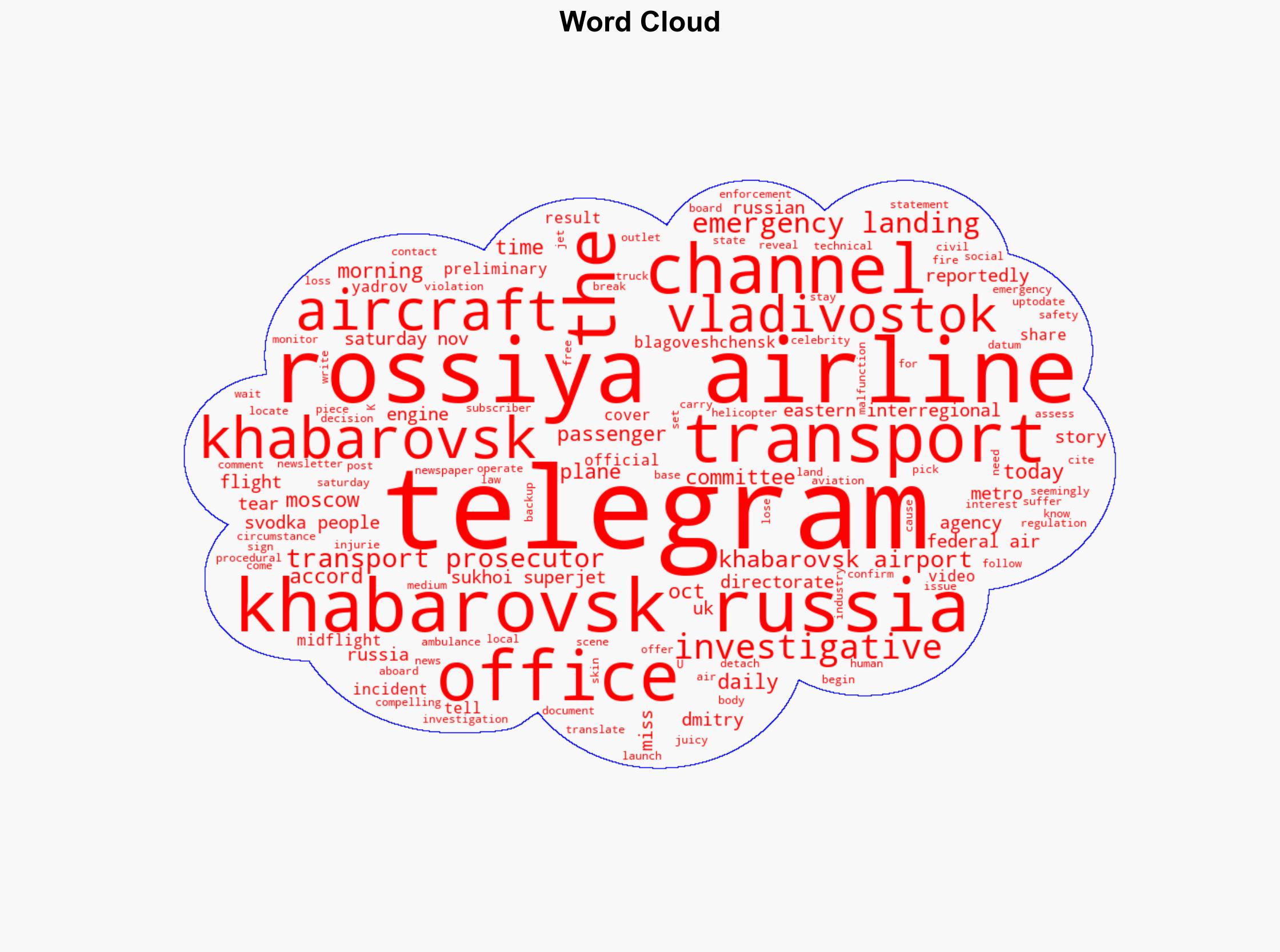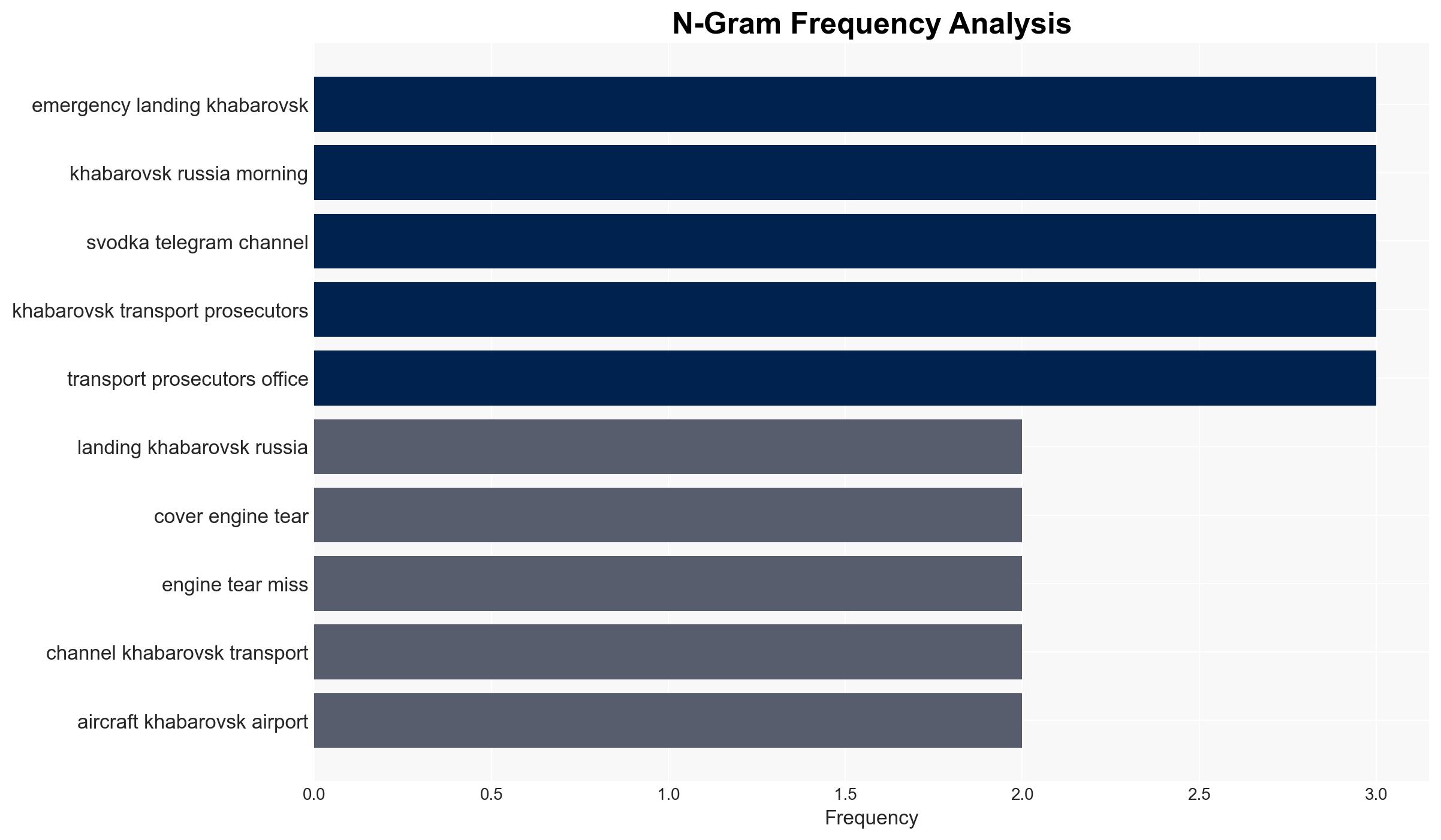Passenger Jet Starts to Fall Apart Mid-Air Forcing Emergency Landing – PEOPLE
Published on: 2025-11-19
AI-powered OSINT brief from verified open sources. Automated NLP signal extraction with human verification. See our Methodology and Why WorldWideWatchers.
Intelligence Report:
1. BLUF (Bottom Line Up Front)
With a moderate confidence level, the most supported hypothesis is that the incident involving the Rossiya Airlines flight was due to a technical malfunction exacerbated by inadequate maintenance protocols. Strategic recommendations include enhancing regulatory oversight and maintenance checks within the Russian civil aviation sector to prevent future occurrences.
2. Competing Hypotheses
Hypothesis 1: The incident was caused by a technical malfunction due to inadequate maintenance practices. This is supported by the preliminary data indicating a “technical malfunction” and the historical context of issues within Russia’s civil aviation sector, as noted by Dmitry Yadrov of the Federal Air Transport Agency.
Hypothesis 2: The incident was a result of external sabotage or deliberate interference. This hypothesis is less supported due to the lack of any direct evidence or claims of responsibility, and the focus of the investigation on technical and regulatory compliance issues.
3. Key Assumptions and Red Flags
Assumptions: It is assumed that the information provided by the Khabarovsk Transport Prosecutor’s Office and other official channels is accurate and not subject to manipulation. There is also an assumption that maintenance records and regulatory compliance data are accessible and reliable.
Red Flags: The potential for underreporting or misreporting of maintenance issues by Rossiya Airlines or regulatory bodies. The historical context of civil aviation issues in Russia suggests a systemic problem that may not be fully addressed by current investigations.
4. Implications and Strategic Risks
The incident highlights significant risks within the Russian civil aviation sector, including potential political fallout if systemic issues are not addressed. There is a risk of economic repercussions for Russian airlines if international confidence is eroded. Additionally, there is a potential for informational threats if the incident is leveraged in narratives that undermine Russian aviation safety standards.
5. Recommendations and Outlook
- Enhance regulatory oversight and enforce stringent maintenance protocols across the Russian civil aviation sector.
- Conduct a comprehensive review of current aviation safety standards and practices.
- Best-case scenario: Implementation of improved safety measures leads to increased international confidence in Russian aviation.
- Worst-case scenario: Continued incidents lead to international sanctions or restrictions on Russian airlines.
- Most-likely scenario: Incremental improvements in safety protocols with ongoing scrutiny from international bodies.
6. Key Individuals and Entities
Dmitry Yadrov – Federal Air Transport Agency
Rossiya Airlines
Khabarovsk Transport Prosecutor’s Office
7. Thematic Tags
Regional Focus, Regional Focus: Russia, Aviation Safety, Regulatory Compliance
Structured Analytic Techniques Applied
- Causal Layered Analysis (CLA): Analyze events across surface happenings, systems, worldviews, and myths.
- Cross-Impact Simulation: Model ripple effects across neighboring states, conflicts, or economic dependencies.
- Scenario Generation: Explore divergent futures under varying assumptions to identify plausible paths.
Explore more:
Regional Focus Briefs ·
Daily Summary ·
Support us





